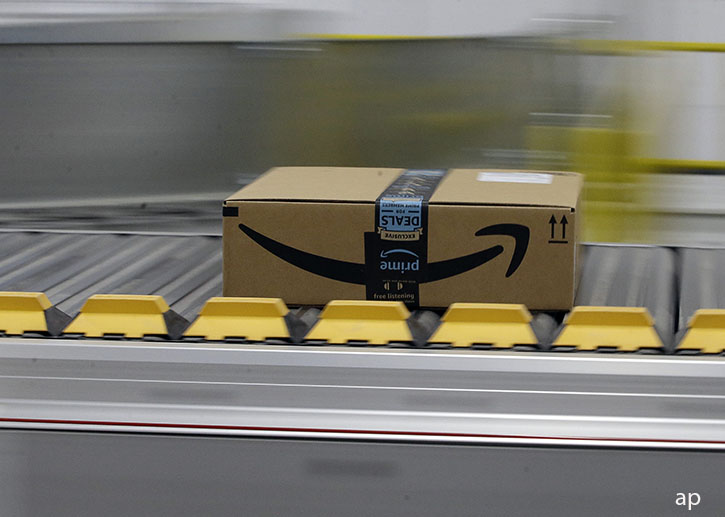Backward-Looking Risk Measures
The world of finance is replete with measures that try to gauge how risky an investment has been in the past. In this context, risk is often equated with volatility, and the most common way to measure the volatility of any f
und (or any portfolio) is standard deviation. As Morningstar calculates it, this measures how widely the fund's monthly returns have varied over some period of time, usually three, five, or ten years, on an annualised basis. If monthly returns have been very consistent, the standard deviation will be low, while if they have been all over the map, the standard deviation will be high. (You can find more about the details of our methodology in this document, and you can find any fund's annualised three-year standard deviation on its Risk and Ratings page on Morningstar.co.uk.)
Another potential problem with standard deviation is that it treats big gains and big losses (in industry parlance, upside and downside volatility) as equivalent. But most investors are much more concerned with downside volatility--the possibility that a fund will lose money or greatly underperform its peers. One measure that takes this difference into account is Morningstar risk, which is part of the Morningstar Risk-Adjusted Return that helps determine a fund's star rating. The details are rather complicated, but the measure uses a "utility function" that penalizes downside variation more than it rewards upside variation. (Finance pros can read all about it in this document.) Each fund's Ratings and Risk page on morningstar.co.uk shows its Morningstar risk relative to its category, ranging from "high" (the riskiest 10%) down to "low" (the least risky 10%). For example, the page for Schroder Income fund shows that its Morningstar Risk is among the lowest in its UK Large-Cap Value Equity category. This indicates the fund has done a better job than its peers of avoiding big losses.
Portfolio Risks
Both standard deviation and Morningstar risk are backward-looking risk measures--that is, they're based on how a fund has performed in the past. That can certainly be useful, but most investors (and potential investors) are more interested in what a fund is likely to do going forward. Obviously we can't know for sure how a fund will perform in the future, but it's still possible to look at its strategy and current portfolio and get some idea of what kinds of potential risks a fund is likely to face.
One factor to keep an eye on is concentration. Funds that concentrate their assets in relatively few holdings--say, under 30 for stock funds--can suffer in the short term if just one or two of those holdings run into problems. Such concentration risk is separate from standard deviation and Morningstar risk, and may not be apparent until trouble hits. For example, the Luxembourg domiciled Aviva Morley UK Equity Focus fund held just 25 stocks as of 31 March 2007. With that compact a portfolio, the risk that one or two holdings can dent returns can be considerably higher than the norm.
A related type of risk arises from sector concentration, especially when considering these volatile sectors such as technology. The most obvious example of this is sector funds, which focus on a single sector, but there are also quite a few funds that are nominally diversified but still pile into one or two sectors that can wreak havoc with returns. For example, Jupiter Emerging European Opportunities devoted 29% of equities to energy and 35% to financial services as of November 2006. That’s a lot of money riding on two segments of the market.
Yet another type of risk to watch out for in stock funds is country or geographical concentration, especially concentration in relatively risky areas such as emerging markets. Neptune Global Equity, for example, has compiled one of the better records in the Global Small/Mid-Cap Equity category over the past five years, and one of the reasons for its success has been its outsized weighting in Russian equities (21% of equities as of 30 April). That exposure has also made this one of the category's most volatile options and means the fund could take a big hit should Russia tumble.
Operational Risks
Operational risks are another group of risks worth touching on for mutual fund investors. These relate to how a fund is run. For example, a risk that a manager might leave a fund is certainly something to consider, and that risk is much higher in some cases than in others. This is difficult to assess given how rapidly jobs change hands in the City, but some firms, such as Leeds-based Rensburg, appear to do a better job than others at holding on to key talent. Look at the manager tenures at a firm’s funds, and if you see many that are less than three years, a healthy dose of scepticism is in order.
The risk of new or higher fees is also worth considering. You should always check not only the initial charge you will pay to get into a fund, but its ongoing annual fees. The best way to do the latter is to evaluate a fund’s total expense ratio, or TER. Funds in the UK often quote only the annual management charge, which can drastically understate the fees you’re actually paying.
Asset bloat is another operational risk to consider; if a fund's asset base gets too big, it becomes harder to beat a benchmark or a peer group, particularly if the fund specialises in mid-cap or small-cap issues. Fidelity split its renowned Fidelity Special Situations fund in two last year in part to combat this problem. A better solution in our view would have been to cap the fund’s assets before it became large enough to cause concern. Concerns about asset bloat can be offset to an extent by the style of a fund—if a manager is contrarian and thus buying what others are selling, or if he uses a low turnover style, he is less likely to run into liquidity constraints than a manager who is momentum oriented or who trades rapidly.
What You Can Do
There are a number of ways you can check the funds in your portfolio (or those you're thinking of buying) for these various types of risk. Look up any fund on Morningstar.co.uk and go to the tabs on the left side of the page. As we saw earlier, under the "Ratings and Risk" tab you'll find the fund's Morningstar risk over the trailing three, five, and ten years, as well as the fund’s standard deviation, along with some other measures we haven't discussed here, such as the Sharpe ratio.
For the forward-looking risks, click on the "Portfolio" tab and scroll down to the sector weightings, where you can see whether the fund is over- or underweight in various sectors relative to its category peers. And our growing library of Analyst Reports (under the "Analyst Research" tab), will generally discuss any significant risks to look out for, including operational risks that may be hard to assess otherwise.
No Fund is an Island . . .
In all this, it's important to remember that no fund's risk should be looked at in isolation. A fund that might look very risky all by itself could be a good fit in certain portfolios. For example, a fund with lots of technology holdings could complement a portfolio with heavy value leanings, and an emerging-markets fund could help diversify a portfolio consisting entirely of domestic stocks. The Instant X-ray tool on Morningstar.co.uk can break down a portfolio by sectors and asset classes (you can also use this tool on portfolios you have already stored on Morningstar.co.uk--just click on the button with the X-logo at the right of the grey bar along the top of the portfolio page). Crucially, it does so by looking through to the underlying holdings of each portfolio, so you’re seeing what your funds actually own, not an assumption based on the fund’s prospectus. You might find that you're taking on risks you didn't realise, such as a big weighting in technology stocks, or you might find that there's room in your portfolio for more risk, but in any case, you’re quite likely to have a much better sense of your portfolio than you did before, and that should help you avoid unpleasant surprises down the road.























